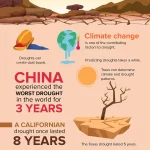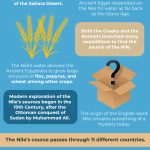
The Nile has left its mark on human history and continues to do so even in the present day. After all, millions depend on it to live. For a lot of people, the river provides essentials like food, freshwater, and transportation. There are also other interesting things about this majestic body of water. For instance, did you know that the Nile is the world’s longest river? And that it is 6,695 kilometers long?
If that piece of trivia tickled your brain, here is another info that you might know about the Nile. The river is commonly linked with Egypt, but it actually flows through 11 countries. They are Uganda, Congo, Tanzania, Rwanda, Burundi, Ethiopia, Eritrea, South Sudan, Kenya, Sudan, and Egypt. So, why do most people automatically connect it with Egypt? Perhaps it had to do with the story of the Hebrew prophet Moses in the Bible. When he was a baby, Moses’ mother hid him from the Egyptian Pharaoh. She put him in a basket and placed the basket along the banks of the Nile river.
There are more Nile River facts about where that came from! For instance, the river is also a popular tourist attraction. Tourists book cruise tours to experience the breathtaking view of the Nile firsthand. If you are thinking of going on a Nile cruise tour, you will go through many Egyptian landmarks. Some of these include the Philae temple built to honor the goddess Isis and the colorful Nubian village, near the city of Aswan.
Apart from being a tourist attraction, it is a vital source of life for numerous Egyptians in particular. In fact, more than 95 percent of the Egyptian population relies on the river’s water. They depend on it so much, most of the locals live within a few miles of its banks to get close to it.
Want to know more about one of the most famous rivers in the world? Get to know what many people consider to be the lifeline of Egypt — take a deep dive into our collection of 40 Nile River Facts. You won’t regret it!
- 01The Nile runs an estimated length of 6,650 km.
- 02The river’s basin covers a total area of an estimated 3.4 million km².
- 03At its widest, the river has a width of 2.8 km.
- 04On average, the river has a depth of 9.5 meters.
- 05At its deepest, the river has a depth of 11 meters.
Nile River Facts Infographics
The origin of the English word Nile remains something of a mystery today.
Its root goes back to the Latin Nilus, as well as the Greek Νεῖλος. The Arabic words for the Nile, en-Nīl and an-Nīl also share the same roots. The mystery lies in the lack of connection with the Ancient Egyptians’ own word for the Nile.
They called it Hapy or Iteru, which later evolved into the Coptic Egyptian words piaro and phiaro. Today, historians and etymologists continue to study the mystery and find the link between the languages.
The White Nile makes up the Nile’s main tributary.
The White Nile starts at Lake Victoria, flowing north for 130 km to Lake Kyoga. From there it flows west to Masindi Port, then north before circling to the east, and then north again to the Karuma Falls. It then flows west through the Murchison Falls, and finally into Lake Albert before flowing north to South Sudan near Nimule, an overall distance of around 200 km. There, it meets with the Achwa River, and after flowing north into Sudan at Renk, meets with the Blue Nile at Khartoum.
It also goes by the name of the Atbara River and starts in northwestern Ethiopia. It then flows over 800 km north to Sudan, where it meets the Nile at Atbarah, which shares its name with the river. The river’s existence depends on the amount of rainfall in Ethiopia and dries up quickly in the absence of rainfall. In fact, the regional dry season from January to June usually sees the Red Nile drying up along its entire course north of Khartoum.





